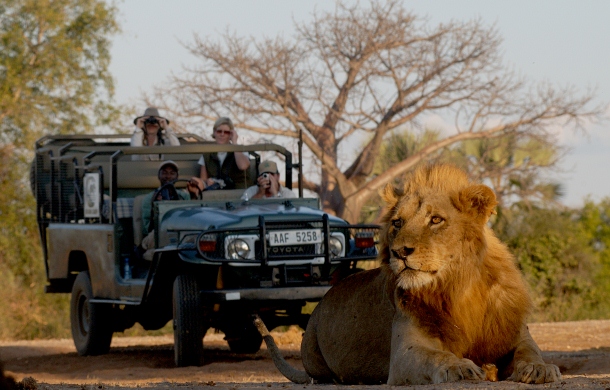Read advice about what to bring on your safari holiday, written by an experienced old African hand:
This is a general safari equipment list that everyone needs to bring for safari holidays of one week or more. This information is based on experience with hundreds of safaris undertaken.
A safari hat is key, but for maximum effectiveness, it must fulfil the following six criteria:
• Furnish total protection from the African sun, which can burn from early morning to dusk. That means the back of your neck needs to be covered.
• Be made of breathable fabric, so that your body heat can escape, and provide your body with evaporative cooling.
• Absorb perspiration to keep the sweat out of your eyes. You don’t want to miss a view of lion cubs or wildebeest because you’re mopping your brow.
• Be waterproof to protect against those sudden downpours.
• A crushable hat is superior, as it will pack flat in your luggage.
• Have a cord to secure it when riding in breezy, open forms of transport. This will keep your hands free to snap wildlife photos.
Your clothing in general should be made of breathable natural fibres. It must be lightweight, durable and neutral colored, so you won’t stand out in the brush (pale green, pale brown, khaki or tan). No white. Besides the essential hat, here is your clothing list.
• A spare pair of shoe or boot laces
• Sturdy, multi-pocketed safari jacket, ideally with zip off sleeves
• Five pairs of socks
• Pyjamas
• Flip flops or other sandals you can get wet to protect your feet
• Five pairs of underwear
• Two or three short sleeved shirts
• Two or three long sleeved shirts (you’ll need these after night falls for insect bite protection)
• The most comfortable footwear you can find—preferably lightweight hiking boots
• Swimsuit
• Two pairs of lightweight pants
• Two pairs of lightweight shorts
• Polarized sunglasses with SPF protection
Necessary documents are:
• Proof of travel insurance
• Passport and visas
• Emergency contact numbers and addresses for post cards
• Itinerary
• Proof of vaccinations
• Passport copy
Essential supplies are:
• Day pack
• Travel size wildlife guides
• Writing implements and travel diary
• SPF-50 sun block and lip balm
• Contact lens supplies
• Skin lotion
• Travel alarm
• Travel sewing kit
• Antacids, anti-diarrhoea, motion sickness pills or patch, allergy remedy
• Pain medication, antiseptic cream
• Moleskin (doubles as band aids)
• Malaria tablets
• Antibacterial wipes
• Insect repellent
You will need to obtain binoculars with very specific features:
• High-powered, yet lightweight (go to a store where you can get assistance to pick out the correct magnification ratio)
• Choose a large exit pupil size and a sizeable outer diameter to allow in more light at dawn and dusk
• Comfortable enough to hold up to your eyes for long periods of time
• Wide field of view, which allows you to spot animals partly hidden in water and undergrowth
• Get the best optical coatings and prisms that you can afford
Minimal safari equipment needs:
• Camera, extra batteries, lens cleaner
• Beanbag to use as tripod
• Headlamp or flashlight
• Electrical adapters
